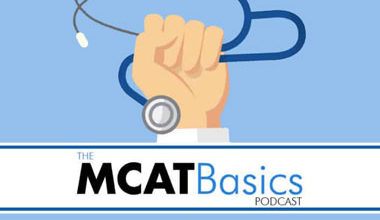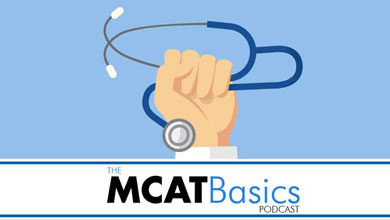Sam reviews social institutions for the Psych/Soc portion of the MCAT. He discusses the social institutions of: health and medicine, education, family, religion, and government.
- [01:43] Definition of a social institution
- [05:14] Health & Medicine
- [16:19] Education
- [25:26] Family
- [30:30] Religion
- [36:10] Government & Economy
Defining Social Institutions
Social institutions are mechanisms of social order that act to meet social needs and often last multiple generations. They have both a structure and function. Social institutions can either be formal or informal. Formal institutions seek to govern human behavior. In other words, they are created in order to regulate behavior. Informal institutions do not intend to regulate human behavior but end up doing so due to community standards.
Health & Medicine
Structure: may refer to hospitals, surgery centers, and the hierarchical healthcare roles
Functions: treats illnesses, promotes health, provides employment
Key Terms:
Medicalization – The process by which a previously non-medical issue is turned into a medical issue. Medicalization is not always detrimental¾it can lead to new research and therapy. For example, before Alzheimer’s disease was known as a “disease”, it was thought to be a normal part of aging. Medicalization of Alzheimer’s disease has pushed the medical community to work towards treating and curing it.
Sick Role Theory – A sick individual takes on a specific role that has rights and obligations. A sick person’s rights include exemption from normal social rules such as work or housekeeping. He is obligated to see illness as undesirable, and therefore tries to recover quickly. Being sick can be seen as deviance because a person is unable to contribute to society while ill. Doctors should be able to differentiate sick individuals from pretenders.
Delivery of Healthcare – How healthcare is delivered to patients.
Illness Experience – How people behave when chronically ill. A chronic disease affects people in different ways and has the potential to change behavior and attitude.
Social Epidemiology – How social conditions impact health. Social epidemiology is concerned with how socioeconomic class, race, and other social factors affect the prevalence and transmission of a disease. It seeks to know why a health problem exists and to find solutions.
Education
Structure: may refer to schools, colleges, teachers, administrators, and nurses
Functions: educates students, socializes students, provides child care
Key Terms:
Hidden Curriculum – The side effect of education or the unofficial purposes of schooling. Transmission of norms and values is one of the informal lessons learned by students.
Educational segregation –Physical separation of students into high and low-achieving schools based on socioeconomic status which may correlate with the neighborhood they live in.
Educational stratification –Separation of students by academic achievement from a young age, which may perpetuate existing inequality.
Teacher expectancy – Phenomenon where a teacher’s expectations affect students’ actual performance. A teacher may provide more attention to a “promising student”, which thereby improves the student’s learning outcomes.
Family
Structure: may refer to all kinds of family structures
Function: regulates sexual activity, socializes and supports children, produces successful members of society, provides companionship, reproduces offspring
Key Terms:
Kinship is relationships between people who have some family ties. There are three types:
- Consanguineal – People related to you by blood like cousins, grandparents, and aunts.
- Affinal – People related to you by marriage like mother-in-law and brother-in-law.
- Fictive – People that are not related to you by blood or marriage. These can be godparents, friends, and adopted children.
Diversity in family forms – Families can take different forms. There is no single structure.
Violence in the family – Everyone can experience violence, most especially women, children, and the elderly. Substance abuse increases the risk of family violence.
Religion
Structure: may refer to temples, mosques, churches, and hierarchical leaders within a religion
Functions: gives members a sense of purpose, creates community, and creates a moral compass
Key Terms:
Religiosity – How religious a person or society is.
Church – A large, bureaucratic organization that is closely integrated into larger society.
Sect – A small, religious group that is not integrated into larger society. Oftentimes it is in conflict with some of the with norms and values of society. Sects are groups that typically break away from the church.
Cult – A small, religious organization that is at great odds with norms and values of larger society. Cults usually originate from outside of mainstream religions. These groups are secretive and do not attempt to convert. Cults rely on a charismatic leader.
Secularization – Transformation of society from identification with religious values and institutions to secular values and institutions. It is a move away from religion.
Modernization – The process by which societies grow and age. Society’s change in predictable ways.
Fundamentalism – Strict adherence to rituals and literal interpretation of religious texts. It opposes secularization and modernization.
Government & Economy
Structure: may refer to local, state, or federal buildings and positions
Functions: maintains social stability, makes and enforces rules, meets social needs, manages international relations, oversees market and competition
Key Terms:
Power – An individual or society’s ability to control or direct others.
Authority – Refers to accepted power or power that people agree to follow.
There are several kinds of political systems:
- Democracy – Citizens of society have the power to vote for changes they want. It can either be a representative democracy where officials are elected to make decisions or a direct democracy where citizens vote to make decisions.
- Monarchy – The power belongs to a ruling family. In an absolute monarchy, kings have total power. In a constitutional monarchy, a king’s power is limited by the constitution. Power is shared with the parliament and citizens have more influence.
- Dictatorship – Nation is ruled by a single person. Power is taken by force and the dictator requires military support.
- Theocracy – A government based on religious law. Rulers are typically high ranking members of a church.
- Totalitarianism/Authoritarianism – Leaders have full power over citizens. Power is taken by force.
Division of labor – Specialization of labor in particular roles, associated with increases in output and capitalism.

